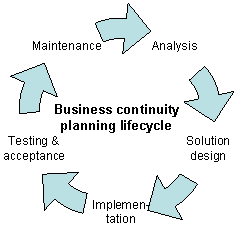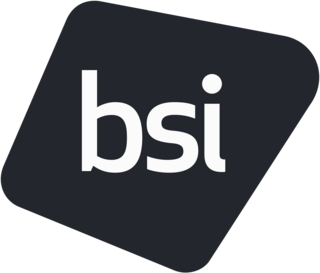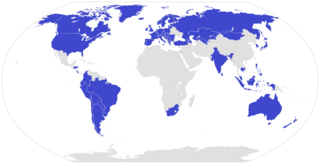Background
BSI Group develops PASs in the UK, [1] while the International Electrotechnical Commission develops international PASs in the arena of electrical, electronic and related technologies, [2] and the International Organization for Standardization develops international ISO PASs. [3]
BSI Group pioneered the PAS format. Under the BSI model, any organization, association or group who wish to document standardized best practice on a specific subject, can commission a PAS, subject to the BSI acceptance process. A British Standard and a PAS must reach full consensus between all stakeholders on technical content. The timescale for the development of a PAS can be shorter, typically around 8 months, and is why it is sometimes referred to as a 'fast-track standard'. [4]
The development of a PAS cannot conflict with, or contradict, existing or draft work within the formal standards arena and must complement, not conflict with, any legislation in the subject area. It is also written in accordance with BS drafting rules, which means that the content must be technically robust and cannot be technically constrained (i.e. it cannot include patented or proprietary methods or products). It is written unambiguously and with objectively verifiable requirements or recommendations. [1]

British Standards (BS) are the standards produced by the BSI Group which is incorporated under a royal charter and which is formally designated as the national standards body (NSB) for the UK. The BSI Group produces British Standards under the authority of the charter, which lays down as one of the BSI's objectives to:
Set up standards of quality for goods and services, and prepare and promote the general adoption of British Standards and schedules in connection therewith and from time to time to revise, alter and amend such standards and schedules as experience and circumstances require.

The International Organization for Standardization is an independent, non-governmental, international standard development organization composed of representatives from the national standards organizations of member countries. Membership requirements are given in Article 3 of the ISO Statutes.

Business continuity may be defined as "the capability of an organization to continue the delivery of products or services at pre-defined acceptable levels following a disruptive incident", and business continuity planning is the process of creating systems of prevention and recovery to deal with potential threats to a company. In addition to prevention, the goal is to enable ongoing operations before and during execution of disaster recovery. Business continuity is the intended outcome of proper execution of both business continuity planning and disaster recovery.
BS 7799 was a British standard "Code of Practice for Information Security Management", first published as such by the British Standards Institution (BSI) in February 1995. Read about the origins of BS 7799 here.
ISO/IEC 20000 is the international standard for IT service management. It was developed in 2005 by ISO/IEC JTC1/SC7 and revised in 2011 and 2018. It was originally based on the earlier BS 15000 that was developed by BSI Group.
BS was BSI's standard in the field of Business Continuity Management (BCM). It was withdrawn in 2012 and 2013 following the publication of the international standards ISO 22301 - ″Societal Security — Business continuity management systems — Requirements″ and ISO 22313 - ″Societal Security — Business continuity management systems — Guidance″

The British Standards Institution (BSI) is the national standards body of the United Kingdom. BSI produces technical standards on a wide range of products and services and also supplies certification and standards-related services to businesses.
The ISO/IEC 27000-series comprises information security standards published jointly by the International Organization for Standardization (ISO) and the International Electrotechnical Commission (IEC).
ISO/IEC JTC 1, entitled "Information technology", is a joint technical committee (JTC) of the International Organization for Standardization (ISO) and the International Electrotechnical Commission (IEC). Its purpose is to develop, maintain and promote standards in the fields of information and communications technology (ICT).
A specification often refers to a set of documented requirements to be satisfied by a material, design, product, or service. A specification is often a type of technical standard.
Information technology risk, IT risk, IT-related risk, or cyber risk is any risk relating to information technology. While information has long been appreciated as a valuable and important asset, the rise of the knowledge economy and the Digital Revolution has led to organizations becoming increasingly dependent on information, information processing and especially IT. Various events or incidents that compromise IT in some way can therefore cause adverse impacts on the organization's business processes or mission, ranging from inconsequential to catastrophic in scale.
ISO 55000 is an international standard covering management of assets of any kind. Before it, a Publicly Available Specification was published by the British Standards Institution in 2004 for physical assets. The ISO 55000 series of Asset Management standards was launched in January 2014.
A technical standard is an established norm or requirement for a repeatable technical task which is applied to a common and repeated use of rules, conditions, guidelines or characteristics for products or related processes and production methods, and related management systems practices. A technical standard includes definition of terms; classification of components; delineation of procedures; specification of dimensions, materials, performance, designs, or operations; measurement of quality and quantity in describing materials, processes, products, systems, services, or practices; test methods and sampling procedures; or descriptions of fit and measurements of size or strength.
Construction Operations Building Information Exchange (COBie) is a United States-originated specification relating to managed asset information including space and equipment. It is closely associated with building information modeling (BIM) approaches to design, construction, and management of built assets.
ISO 20121 is a voluntary international standard for sustainable event management, created by the International Organization for Standardization. The standard aims to help organizations improve sustainability throughout the entire event management cycle.
ISO/IEC 27001 is an international standard to manage information security. The standard was originally published jointly by the International Organization for Standardization (ISO) and the International Electrotechnical Commission (IEC) in 2005, revised in 2013, and again most recently in 2022. There are also numerous recognized national variants of the standard. It details requirements for establishing, implementing, maintaining and continually improving an information security management system (ISMS) – the aim of which is to help organizations make the information assets they hold more secure. Organizations that meet the standard's requirements can choose to be certified by an accredited certification body following successful completion of an audit. The effectiveness of the ISO/IEC 27001 certification process and the overall standard has been addressed in a large-scale study conducted in 2020.

ISO 45001 is an International Organization for Standardization (ISO) standard for management systems of occupational health and safety (OHS), published in March 2018. The goal of ISO 45001 is the reduction of occupational injuries and diseases, including promoting and protecting physical and mental health.
ISO/IEC 27017 is a security standard developed for cloud service providers and users to make a safer cloud-based environment and reduce the risk of security problems. It was published by the International Organization for Standardization (ISO) and the International Electrotechnical Commission (IEC) under the joint ISO and IEC subcommittee, ISO/IEC JTC 1/SC 27. It is part of the ISO/IEC 27000 family of standards, standards which provides best practice recommendations on information security management. This standard was built from ISO/IEC 27002, suggesting additional security controls for the cloud which were not completely defined in ISO/IEC 27002.
This page is based on this
Wikipedia article Text is available under the
CC BY-SA 4.0 license; additional terms may apply.
Images, videos and audio are available under their respective licenses.





